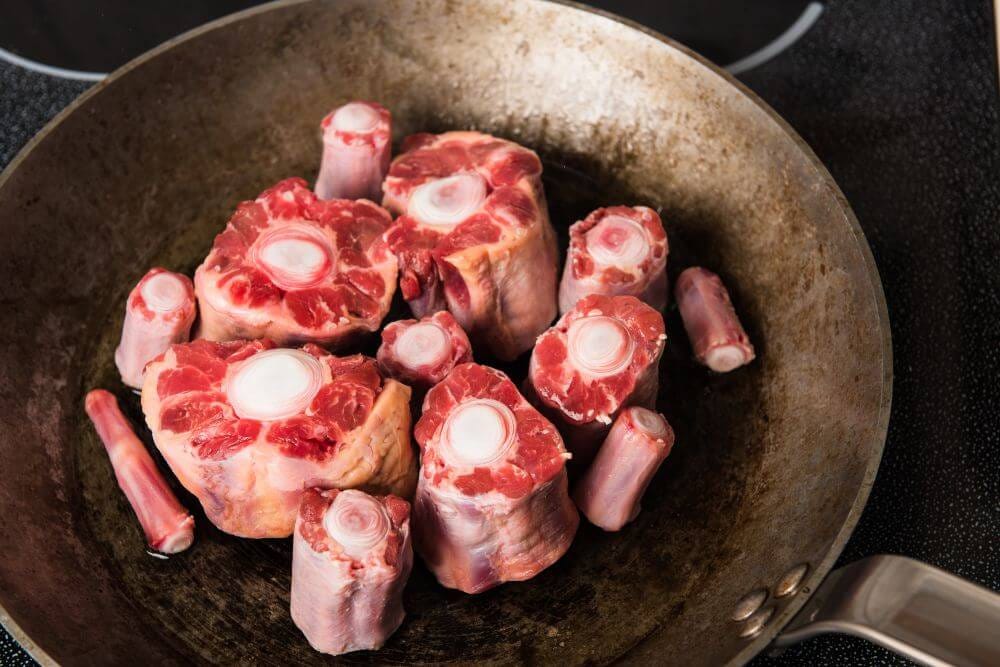ANCESTRAL EATING: Gelatin pt.1
Your diet is almost certainly deficient in gelatin. Here's why that's a bad thing

Welcome back to ANCESTRAL EATING. After last week’s post on Jared Diamond’s crappy book, The World Until Yesterday, we’ll now resume normal proceedings with a two-part instalment on the benefits of adding gelatin to your diet. In this first part, I’m going to talk about why gelatin is likely to be missing from your diet and why that’s a bad thing. In the next part, I’ll provide some recipes for you to create gelatin-rich meals, including cheap, delicious and extremely nourishing bone broth.
As we know from Weston Price, there are many things missing from the modern diet. One of these things, which Price doesn’t discuss very much if at all, is collagen, whose cooked form we refer to as gelatin. We’ll just consider the two substances and terms as interchangeable for the purpose of this essay.
When people talk about the benefits of gelatin, they tend to mention its benefits for the skin and joints, which are all very valid.
Collagen is extremely important to the structure of your body’s tissues. Here’s why:
Collagens are a family of extra-cellular proteins that give skin its ability to move, stretch, and rebound into shape. Thin wisps of tough, elastic collagen molecules run between adjacent cells in the outermost layer of skin, called the epidermis. And larger bundles of collagen form strips that weave together in a continuous layer beneath the epidermis, in a part of the skin called the dermis.
Collagens aren’t just in skin; they’re everywhere, imparting strength to all your tissues. Just as strands of collagen running between skin cells hold our outermost layer of skin together, collagens unite adjacent cells in all your glands and organs, from collagen-rich robust tissues like bone and heart valves to squishy soft lower collagen-content organs like brain, liver, and lungs. Bundles of collagen form extended strips and sheets in the sturdier tissues like ligaments and tendons that surround your joints and hold your skeleton together. Collagen is the most prevalent kind of protein in your body; about 15 percent of your dry weight is pure collagen (dry weight is your body weight without water, which composes about 60 percent of a normal adult male’s total mass). Without it, we wouldn’t just fall apart at the joints; we would literally disintegrate into small piles of individual cells. While it may seem like an obvious connection, doctors are only now beginning to appreciate the relationship between collagen strength and sports and, for those with jobs that involve lifting or physical labor, work performance. Research now reveals that people with weak collagen experience more injuries throughout their lives. (Catherine Shanahan, Deep Nutrition, p.306)
If your diet is deficient in gelatin, your collagen-rich tissues will suffer. Lack of gelatin is responsible for skin aging, including sun damage, joint issues and even cellulite. Eating enough gelatin is therefore essential if you want to maintain these tissues in optimal condition — and of course you should.
But there are more benefits to consuming gelatin than just radiant skin and smoothly functioning joints, as the late Dr Ray Peat informs us, and it’s these less well-known benefits that I want to spend the rest of this piece talking about. Although Peat is best known for his carrot salad, which became something of a TikTok sensation recently, and for his important work on vegetable and seed oils (aka polyunsaturated fatty acids or PUFAs) and sugar, he also had some very interesting things to say about the protective role of gelatin in traditional diets and the negative effects of gelatin deficiencies in modern diets.
In simple terms, gelatin deficiencies in modern diets result from our abandonment of the head-to-toe style of eating favoured by our ancestors, where virtually no part of an animal would go to waste. I’ve talked about this modern bias at length, so I won’t rehearse it again, suffice to say that the vast majority of people get most of their animal protein from lean cuts of meat rather than things like organ meat, skin, blood, bone broth and tougher cuts of meat cooked on the bone. Lean cuts of meat contain very little gelatin, but an abundance of other kinds of protein. Gelatin, being an animal substance, is entirely absent from vegetarian and plant-based diets.
Keep reading with a 7-day free trial
Subscribe to In the Raw to keep reading this post and get 7 days of free access to the full post archives.





